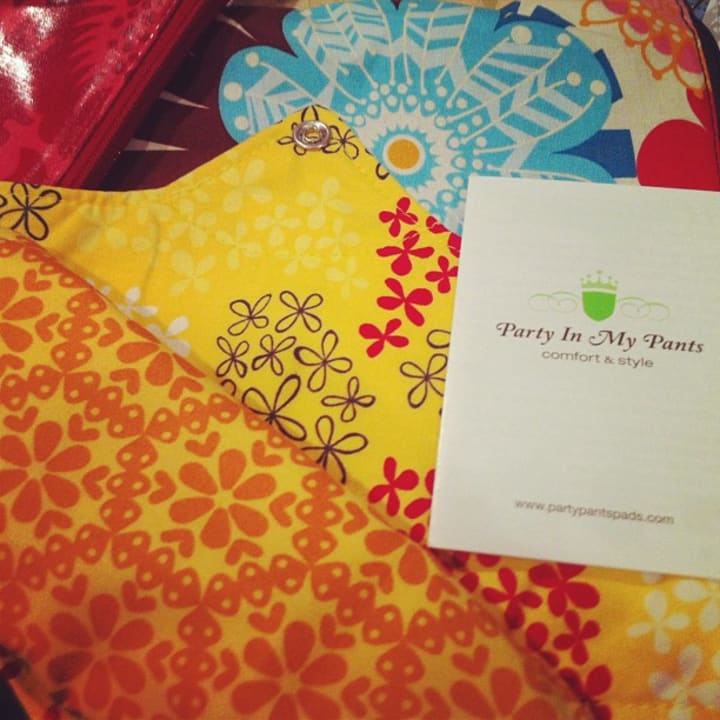Menstrual Cups
Making the change from pads and tampons to alternative products.

As women everywhere are well aware, there are various products available for use during menstruation. Disposable towels and tampons are the popular products of choice but there are alternative options.
Disposable sanitary products
Disposable products can be uncomfortable, impractical, expensive, and bad for the environment. With a plethora of brands, sizes, and absorbencies, while it may seem likely everyone will find their ideal fit, it could be said that the choice is confusing.
Even with the best disposable products on the market, there is a chance of leakage. Given that women often have busy lives, the necessity to change a towel or tampon regularly, especially if flow is heavy, can be an unwelcome interference.
Some cheaper brands of product are just as good as their more expensive counterparts. There are various estimates regarding the annual cost of sanitary products ranging from £15 to over £400.
Cloth pad

Image courtesy of Ann Marle Michaels
Cloth pads
One alternative which is becoming more popular is the cloth pad. These cloth pads work in exactly the same way as disposable pads but can be washed and reused. Taking the lowest estimate of £15 per year for disposable towels, cloth pads are, overall, considerably cheaper. Although the initial cost of a single washable cloth pad is around £4, and multiple pads will be needed, it will be a far less regular purpose, having to be replaced every five years or so with correct usage and care.
There are disadvantages of cloth pads. A heavy flow might mean that the cloth pads will still leak. The need to wash them regularly could be considered a disadvantage as, of course, disposable products are designed to save time and effort.
Similarly to disposable products, the cloth pad must still be changed around every four hours, and many women will be put off by the need to carry used bloodied cloths.
History of the menstrual cup
The menstrual cup, otherwise known as a moon cup, has been around for over a century. An early version was invented in the 1870s but after some coming and going during the 20th century, the modern menstrual cup was reintroduced in the 1980s. It was not until the early 21st century, however, with the integration of medical grade silicon that the Lunette company began to make the product a success. Formerly, cups had been made of latex so silicon meant that those with latex allergies could try the product.
What is a menstrual cup and what is so good about it?

Menstrual cup inserted and placed underneath the cervix
A menstrual cup is a cup-shaped device designed to collect menstrual blood. The cup is inserted to sit beneath the cervix. Correct insertion can take a little practice for some but is simple to learn.
One disadvantage of a menstrual cup is that there is no dignified way to insert it. To empty and wash the cup may also be an unpleasant experience. However, the advantages of a menstrual cup far outweigh these inconveniences.
Menstrual cups hold around 1oz (30ml) of blood. As most women lose between 1 and 2oz during each cycle, this eliminates the rush to change every few hours as it is safe to leave the cup for up to twelve hours.
With an average cost of £20 to £30, a single menstrual cup may seem like an expensive purchase. Nevertheless, they can last for around ten years and there is usually no need to have more than one at a time.
Menstrual cups come are usually sold in two different sizes. Size 1 is suitable for teens and younger women. Smaller and softer than Size 2, they are ideal for light to moderate flow. Size two is usually firmer and better for heavier flow, older women, and women who have given birth.
The menstrual cup can be easily emptied and cleaned with soap and water. It is safe to use, compatible with activities such as swimming, and comfortable enough to wear for as long as necessary.
Personal recommendation
I use a size 2 Lunette cup for older women and heavy flow. It is comfortable and can easily be wiped clean. It is only recently that I began to use a cup after a discussion with a friend.
Without getting too personal, there were health and menstruation issues which made other products impractical.
An irregular cycle, having to use multiple products at once, amongst other things, and a recommendation from a friend made me consider the menstrual cup. The worst thing for me had been not going swimming. A menstrual cup meant that I didn't have to worry about any overflow.
When I first began using the cup, I still used pads alongside it, and still prefer pads at night. Getting used to the cup, ensuring it is inserted correctly, I am more comfortable to use it alone and intend to use the cup exclusively.






Comments
There are no comments for this story
Be the first to respond and start the conversation.